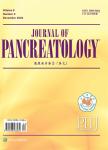Impact of antagonist peptides and chelators on the diagnostic performance of PET/CT using gallium-68 labeled somatostatin receptor antagonists
Impact of antagonist peptides and chelators on the diagnostic performance of PET/CT using gallium-68-labeled somatostatin receptor antagonists作者机构:Nuclear Medicine DepartmentState Key Laboratory of Complex Severe and Rare DiseasesCenter for Rare Diseases ResearchBeijing Key Laboratory of Molecular Targeted Diagnosis and Therapy in Nuclear MedicinePeking Union Medical College HospitalChinese Academy of Medical Science and Peking Union Medical CollegeBeijingChina Department of OncologyPeking Union Medical College HospitalBeijingChina Department of Gastrointestinal Oncologythe fifth Medical CenterGeneral Hospital of PLABeijingChina Department of Hepatobiliary SurgeryNational Cancer Center/National Clinical Research Center for Cancer/Cancer HospitalChinese Academy of Medical Sciences and Peking Union Medical CollegeBeijingChina Department of General SurgeryPeking Union Medical College HospitalPeking Union Medical CollegeChinese Academy of Medical SciencesBeijingChina
出 版 物:《Journal of Pancreatology》 (胰腺病学杂志(英文))
年 卷 期:2022年第5卷第3期
页 面:15-39页
学科分类:1002[医学-临床医学] 100214[医学-肿瘤学] 10[医学]
基 金:This work was sponsored in part by the National Natural Science Foundation of China(No.82071967) CAMS initiative for innovative medicine(No.CAMS-2018-I2M-3-001) National Key Research and Development Program of China(No.2016YFC0901500) Center for Rare Diseases Research,Chinese Academy of Medical Sciences,Beijing,China(No.2016ZX310174-4)。
主 题:Somatostatin receptor antagonist 68Ga-NODAGA-LM3 68Ga-DOTA-LM3 68Ga-NODAGA-JR11 neuroendocrine tumor
摘 要:Objective:Different SSTR2 antagonists have been developed.This study aims to evaluate the impact of different peptides and chelators on the diagnostic performance of SSTR2 antagonists in well-differentiated NETs.Methods:In this prospective study,participants were equally randomized into two arms:Arm A,participants would undergo a whole-body 68Ga-NODAGA-LM3 PET/CT scan on the 1st day and 68Ga-DOTA-LM3 PET/CT scan on the 2nd day;Arm B,participants would undergo a whole-body 68Ga-NODAGA-LM3 PET/CT scan on the 1st day and 68Ga-NODAGA-JR11 PET/CT scan on the 2nd day.Biodistribution in normal organs,lesion detection ability,and tumor uptakes were compared within each Arm.Results:A total of 40 participants(age,49.5±13.4,21 men),20 in each arm,were recruited in the study.In Arm A,68Ga-DOTA-LM3 showed lower background.However,the lesion detection ability(overall lesion detected,445 versus 548,P=0.005)and the lesion uptake(overall lesions SUVmax,19.8±17.2 versus 35.3±28.8,P0.001)was significantly lower than those of 68Ga-NODAGA-LM3.In Arm B,both 68Ga-NODAGA-LM3 and 68Ga-NODAGA-JR11 showed similar biodistribution and lesion uptake(SUVmax,28.5±23.8 versus 25.0±20.0,P0.001)despite minor differences.The lesion detection ability was the same between these two tracers(overall lesion detected,503 versus 503).Conclusions:The diagnostic performance of SSTR2 antagonists was sensitive to chelators.Both 68Ga-NODAGA-LM3 and 68Ga-NODAGA-JR11 outperformed 68Ga-DOTA-LM3 with higher lesion uptake and detection ability,of which 68Ga-NODAGA-LM3 had marginally but significantly higher lesion uptake.



